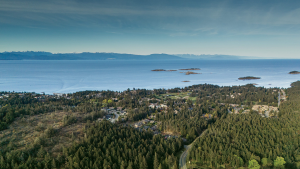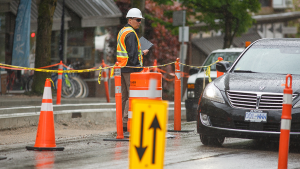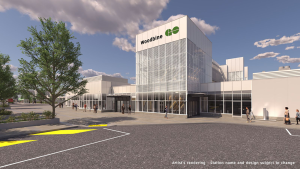A unique construction summit is helping local contractors network with public sector clients and develop their business plans to meet the requirements of upcoming projects in Fort McMurray, Alberta.
“We had a big increase in the number of our members, who got work in the MUSH (Municipalities, Universities, Schools and Hospitals) sector from the previous Summit,” said Charles Iggulden, president of the Fort McMurray Construction Association (FMCA).
“In previous years two or three members said they got work from the Summit, but this year between 60-70 per cent of the people attending put up their hands. We have more members working on public sector projects than ever before.”
The public sector presented their spending plans for the next few years to about 77 local contractors at the 2011 Future Projects Summit, which was held recently in Fort McMurray.
“As a result of the summit, the MUSH sector is finding out about subcontractors and their capabilities,” said FMCA chief administrative officer Diane Slater.
“Businesses find out about the work and the new opportunities, but also get to talk business to business,” he said.
A panel of representatives from the procurement departments of Alberta Infrastructure, Fort McMurray Public School District, MacDonald Island Park Corporation and the Regional Municipality of Wood Buffalo presented information on current and future projects.
The presentations are designed to assist association members with planning their potential work and resources.
For example, Brian Soutar, executive director of project services for Alberta Infrastructure, said the provincial government has committed to a minimum of $17 billion in its capital plan between 2011-2012 and 2013-14.
The capital plan doesn’t include details of the money that will be invested in the Regional Municipality of Wood Buffalo.
However, he said that the tender documents for RCMP detachment temporary cells are being developed.
There are two health centres in the design stage, while the designs are complete for renovations to the emergency ward and the intensive care unit at Northern Lights Regional Health Centre.
The Parson Creek and Saline Creek housing developments will require schools and community centres.
“The MUSH sector is starting to get projects into planrooms and they are doing it because they want to,” said Iggulden. “Now they are making sure their primary contractors submit plans, so subcontractors can have access to opportunities.”
Slater explained that not all local companies can be a general contractor because some of the work is being done in large packages.
“It is important to ensure that the public sector post their plans to the planrooms, when they prequalify the general contractors,” said Slater. “Not every general is a multi- trade, so they need and want to work with local sub-trades.”
Perhaps the best example of this process is the Fort McMurray Airport project.
“The Airport Authority has given us 85 blueprints and asked the general contractors to bid on work,” she said.
“They have placed the blueprints and specifications in our planroom. The sub-contractors will use the plans to bid to different general contractors.”
This is the third summit hosted by the FMCA, which came up with this approach to help local construction firms bid for public sector work, in the wake of the 2008 recession.
Fort McMurray was the centre of a seven-year oil boom between 2002 and 2008, which is the strongest period of economic growth recorded by any province in Canadian history.
During the boom, oilsands construction projects consumed a large share of local labour and materials.
At the same time, public infrastructure work wasn’t able to keep up with population growth. The 2008 Municipal Census for the Regional Municipality of Wood Buffalo (RMWB) shows that its population increased by 141.2 per cent to 103,334 in 2008 from 42,847 in 1999.
The population of Fort McMurray expanded rapidly to 72,000 in 2008 from about 36,000 in 1999. It was an average annual growth rate of 7.9 per cent. Fort McMurray is part of the regional municipality.
Local schools and the hospital are overcrowded.
The emergency room has become the only option for many people dealing with health issues.










Recent Comments
comments for this post are closed